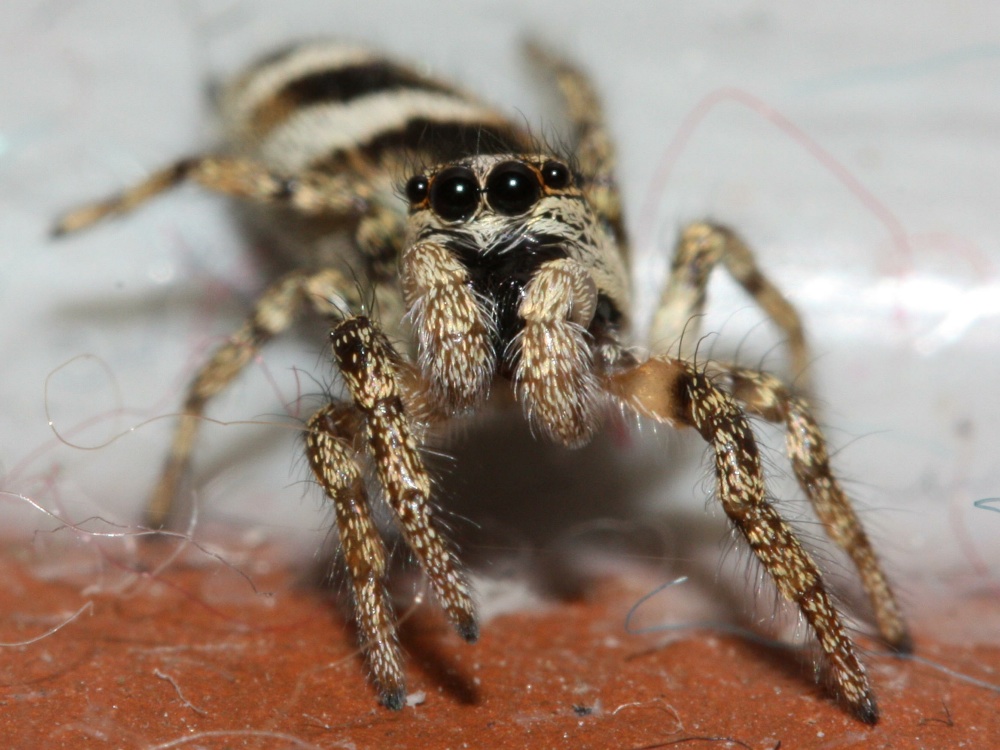Joanna Lawrence, The Fleet Pond Ranger, writes:
There are 630 species of spider in Britain, of which 130 species were recorded during a 1998 survey at Fleet Pond.
Spiders come in many shapes and sizes with each group different from the rest. Hunting techniques vary widely across the different groups with not all spiders making webs to catch their prey. The Jumping spiders for example have two very large eyes at the front of their heads to allow them to hunt visually and pounce on their prey. These eyes are highly developed with binocular vision, excellent focusing ability and are also properly sensitive to colour.
Some species such as the Woodlouse Eating Spiders are specially adapted to their prey. These spiders have extremely large jaws which allow them to pierce the tough outer body of the woodlice.
For those spiders that spin webs, there is great variation in the types and shapes of webs spun. Some are round, triangular or even tunnels of silk in which the spider lies in wait for prey. Spiders can produce 7 different types of silk from 7 different glands, all of which are used for different purposes. Although they do not have all 7 glades, spiders usually have at least 3 or 4.
Zebra Jumping Spider
Fleet Pond has a great variety of spiders, and several rather fascinating and unusual species are found here, a few of which are described below.
The Water Spider Argyroneta aquatica is a spider that lives an aquatic lifestyle. It has been found at Fleet Pond in amongst the Bog Bean plant which grows in patches around the Pond. They spin a retreat web under water amongst vegetation, as shown in the photo, which is then filled with air which the spider collects from the surface. Oxygen levels are maintained within this retreat by diffusion from the surrounding water or from bubbles of oxygen from the surrounding vegetation. Mating and egg laying takes place within the web. Prey is also brought here to be eaten and is only rarely taken to the surface. Prey usually includes aquatic invertebrates and occasionally small fish.
Water Spiders (Female and Male)
Fleet Pond is also home to Britain’s biggest spiders, the Raft Spider Dolomedes fimbriatus. This species lives in amongst vegetation in wet areas such as wet heaths and fens and, as its name suggests, can float on top of water like a raft. They hunt by sitting in low vegetation with their front feet on the surface of the water ready to pick up vibrations made by prey which are then pulled out of the water and eaten. Prey can include insects as large as dragonflies, tadpoles and even small fish. Prey can also be chased across the surface of the water or through vegetation.
A Raft Spider Eating A Dragonfly
The Wasp Spider Argiope bruennichi is a very distinctive and beautiful spider with yellow and black stripped markings. This species was once confined to the south coast of England but has been slowly spreading north. It is an orb web spider which spins a circular web in low vegetation with a distinctive zigzag pattern above and below the centre of the web. It catches flying insects such as crickets and grasshoppers. The female’s egg sack is also the largest of any British spider, measuring 25mm across.
Wasp Spider
Photo credits: Wikipedia (first), Wikipedia (second) and Joanna Lawrence (third and fourth).




